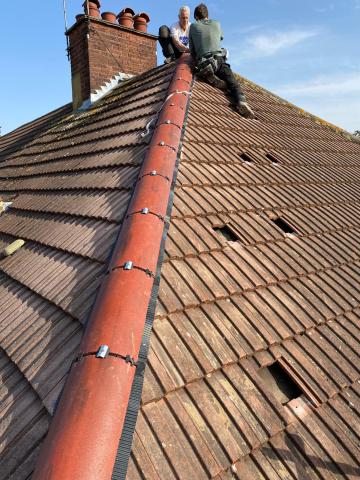As a Kia Soul owner, the radiator support is a core component that ensures the structural stability of the engine compartment and the efficient operation of the cooling system. As the vehicle ages or experiences external impacts, the support may trigger chain failures due to metal fatigue, corrosion, or deformation. Especially in classic models such as the 2016 Kia Soul, the adaptability of the radiator support's design to the overall vehicle structure directly affects the lifespan of the cooling system. This article will deeply analyze the five key signs indicating that the Kia Soul Radiator Support needs to be replaced, helping car owners identify potential hazards in a timely manner and adopt scientific repair solutions.
1. Coolant Leakage and Decrease in Heat Dissipation Efficiency
When the Kia Soul Radiator Support undergoes slight deformation or the fixing bolts loosen, the installation positions of the radiator and the condenser may shift, causing the seal at the pipeline connection to fail. At this time, the coolant will seep out from the interface, leaving drip marks on the ground or wet traces in the engine compartment (commonly seen at the bottom of the water tank or at the seams of the support). If not repaired in a timely manner, the radiator's cooling fins will deform due to unstable support, further reducing the heat exchange efficiency and triggering the following phenomena:
The water temperature warning light on the dashboard frequently lights up: Especially when driving at low speeds or idling, the radiator cannot effectively cool down due to insufficient air flow.
Abnormal air conditioning cooling: The displacement of the condenser position may squeeze the refrigerant pipeline, resulting in an imbalance of the pressure in the air conditioning system.

2. Abnormal Noise and Vibration in the Engine Compartment
The 2016 Kia Soul Radiator Support adopts a composite structure of aluminum alloy and galvanized steel sheet. If the metal strength decreases due to corrosion or collision, the following mechanical abnormal noises may occur:
Metal friction sound: After the support deforms, it comes into contact with components such as the radiator and the fan shroud, generating high-frequency friction sounds due to vibration during driving.
Resonance noise: When the fixing points of the support loosen, the vibrations of the engine compartment components (such as the electric fan and the compressor) will be transmitted to the vehicle body through the support, forming a low-frequency buzzing sound.
Such abnormal noises usually intensify during acceleration or on bumpy roads. Ignoring them for a long time may accelerate the wear of the electric fan bearings and even cause the radiator pipeline to rupture.
3. Abnormal Gaps between the Front Bumper and the Vehicle Body
As the load-bearing framework of the front vehicle body, the deformation of the radiator support will directly change the assembly gaps between the front bumper, the headlight assembly, and the engine hood. Car owners can determine the state of the support through the following visual inspections:
Asymmetric gaps on the left and right sides of the bumper: The distortion of the support causes the fixing points of the bumper to be misaligned.
Offset of the headlight irradiation angle: The sinking or tilting of the support makes the installation base of the headlights inaccurate, posing a safety hazard during night driving.
Such problems are commonly found in vehicles that have not replaced the original support after accident repairs. Aftermarket parts are prone to secondary deformation due to insufficient material strength .
4. Associated Damage to Chassis Components
The Kia Soul Radiator Support has a mechanical linkage with the longitudinal beam, the anti-collision beam, and the suspension system. If the support is severely corroded or broken, the following associated failures may occur:
Wear of the electric fan blades: The displacement of the radiator causes the fan blades to rub against the shroud, and even the blades may break.
Bending of the condenser pipeline: The refrigerant circulation is blocked, and the cooling efficiency of the air conditioner drops sharply.
Inaccuracy of the geometric parameters of the front suspension: The deformation of the support indirectly affects the suspension pivot points, resulting in uneven tire wear or the steering wheel pulling to one side.
5. Corrosion and Structural Cracks
The 2016 Kia Soul Radiator Support, which is exposed to a wet and de-icing salt environment for a long time, is prone to electrochemical corrosion. The key inspection areas include:
Welding seams: The original support is robot laser welded, and the manual welding points of aftermarket parts are prone to corrosion first.
Around the bolt fixing holes: The spread of corrosion will cause the hole diameter to expand, reducing the bolt pre-tightening force.
If paint film peeling, rust nodules, or through holes are found on the surface of the support, it is necessary to replace it immediately to avoid the risk of sudden fracture.
6.Professional Maintenance Suggestions and Preventive Measures
Regular visual inspection: Check the corrosion of the engine compartment support, the tightness of the bolts, and the position of the radiator every six months.
Mandatory inspection after an accident: Even in the case of a minor collision, a 3D measuring instrument should be used to check the deformation of the support.
Choose original parts: The original Kia Soul Radiator Support has been verified through the vehicle's collision simulation to ensure that the design of the crush zone matches the material strength.
Anti-corrosion treatment: Spray anti-rust wax on the surface of the support or install a splash guard to reduce the erosion of de-icing salt.
Conclusion
The damage to the Kia Soul Radiator Support often starts with subtle signs. If not intervened in a timely manner, it may lead to high repair costs. Car owners should pay special attention to the five signs of coolant leakage, abnormal noise, abnormal vehicle body gaps, associated damage, and corrosion, and give priority to the original support certified by ASME. Through scientific maintenance and precise replacement, the lifespan of the cooling system can be significantly extended, ensuring driving safety and the driving experience. If you need to obtain a high-quality radiator support that is fully adapted to the 2016 Kia Soul, you are welcome to visit our product page to obtain professional technical support.







